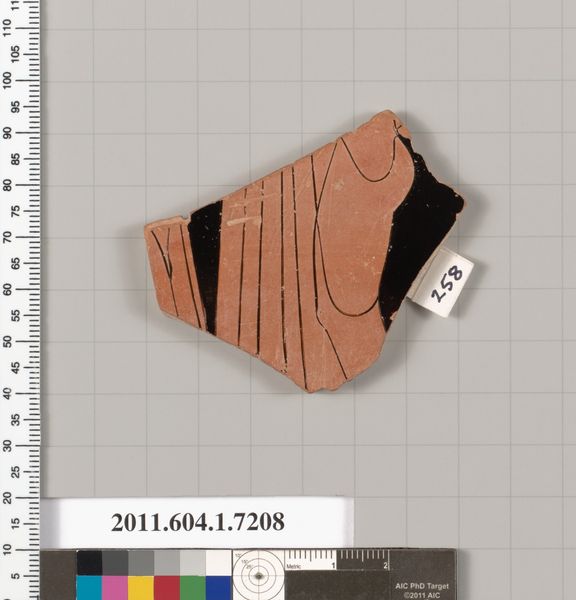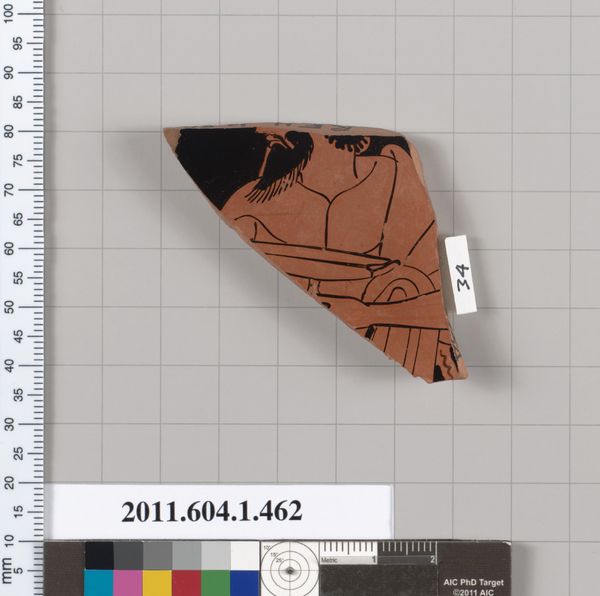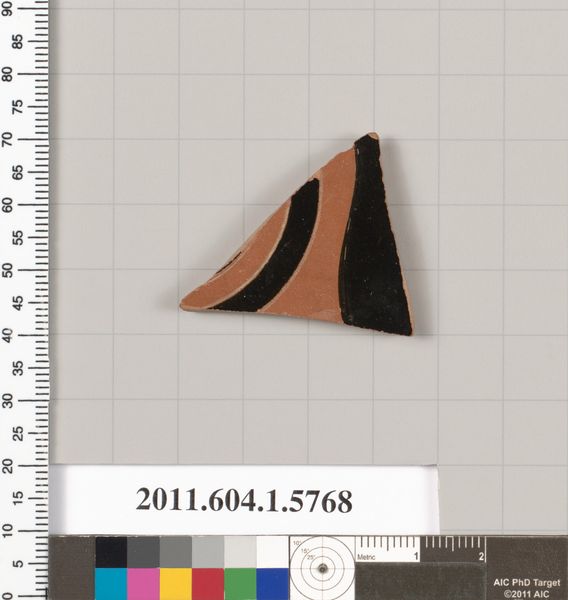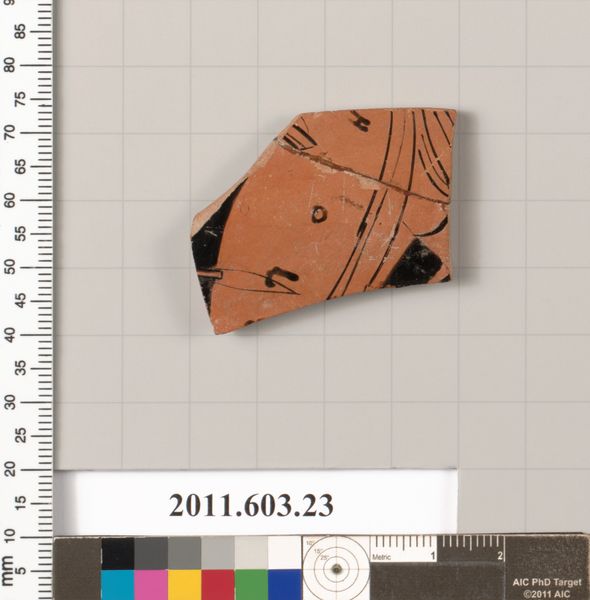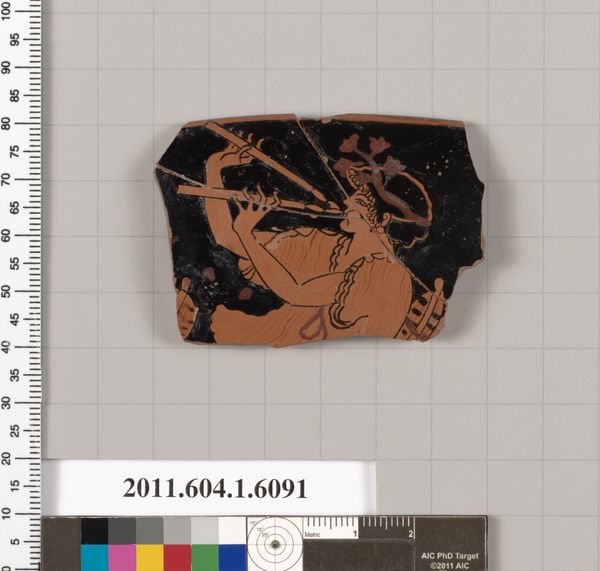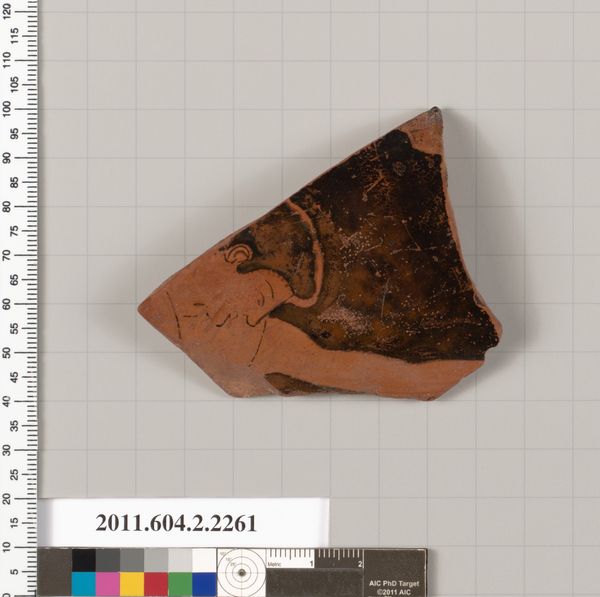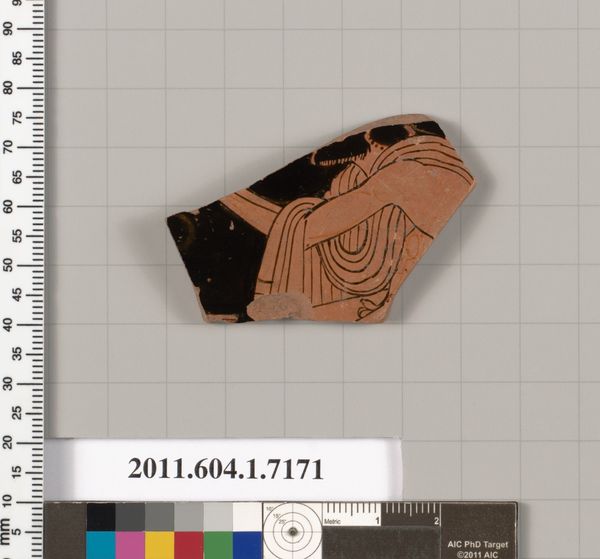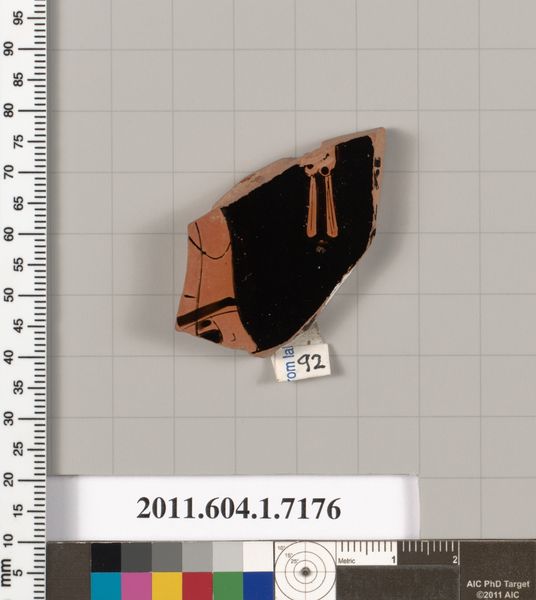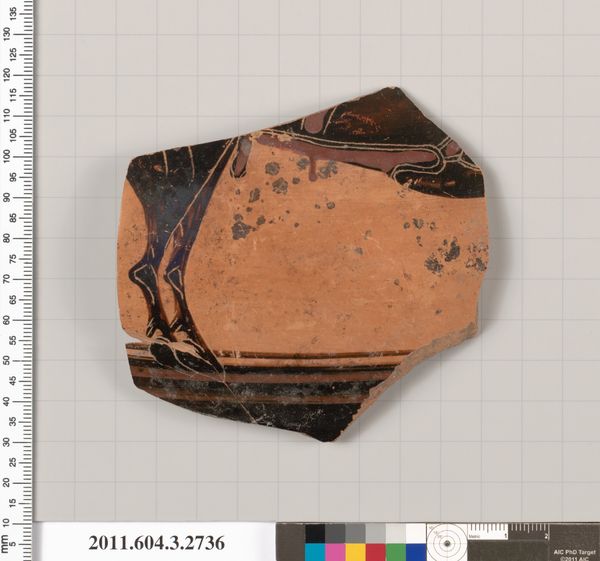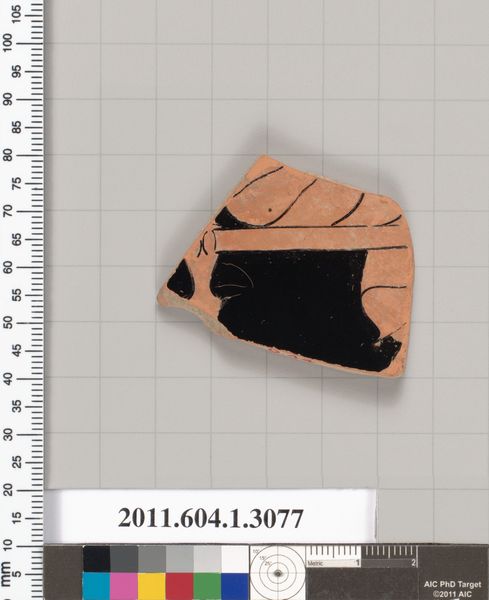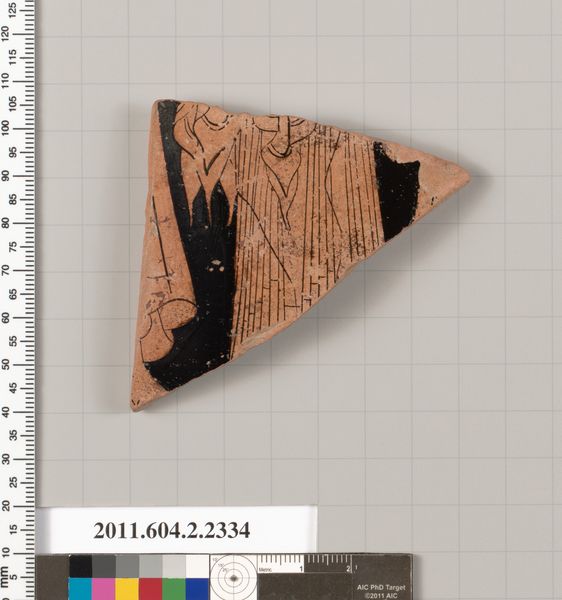
Terracotta fragment of a pot; unglazed on the inside 530 BC
0:00
0:00
drawing, terracotta
#
drawing
#
disrepair
#
greek-and-roman-art
#
vase
#
figuration
#
roman-art
#
geometric
#
ancient-mediterranean
#
terracotta
Copyright: Public Domain
Curator: Before us is a fragment dating back to 530 BC, simply titled "Terracotta fragment of a pot; unglazed on the inside." It resides here at The Metropolitan Museum of Art. Editor: Well, even as a shard, the geometry grabs you, doesn't it? Those bold, black lines contrasting with the warm terracotta – a strong graphic quality even now. Curator: Absolutely. Considering its function, a piece of a pot, this fragment embodies a utilitarian purpose imbued with artistic expression. The form and decoration reflect not just aesthetics but social functions related to feasting, libations, and communal gatherings central to Greek life. Editor: Looking at it, one wonders about the hands that formed it, the fire that hardened it, and the individuals who originally used this vessel in its complete state. The material speaks volumes, crafted from readily available clay, locally sourced. How the availability of terracotta influenced aesthetic decisions. Curator: Precisely. Analyzing its form and the potential scenes adorning the pot before its fragmentation allows us insights into gender roles of Ancient Greeks, cultural ideals of beauty, as well as political affiliations influencing the choice of narratives represented on functional wares. Editor: It’s that tangible connection to labor I find fascinating. Imagine the potter’s wheel, the precise hand movements involved in creating the pot's form, then a painter meticulously adding these distinct graphics with iron oxide, creating what is known as Black-figure pottery. It brings one closer to the conditions of labor and creation. Curator: We need to also think about what it means for such artifacts to have survived, in pieces like this fragment, what they continue to express regarding the past, but importantly how these objects are read today through our present day sensibilities, and the power relations embedded within our present contexts of displaying them within museums, shaping our understanding. Editor: Right. There’s an inherent value in seeing the break itself—in that imperfection we witness time. Curator: It offers so much insight when thinking of these artifacts. It highlights our ever-evolving interpretation but always through dialogue with history, politics, and cultural studies. Editor: Indeed, focusing on its composition, materiality, and method, unveils layers of craftsmanship and allows an appreciation for these anonymous hands' deep impact on the social experience during that era.
Comments
No comments
Be the first to comment and join the conversation on the ultimate creative platform.
